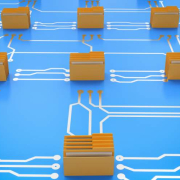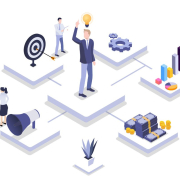A vCIO’s Perspective on MFA: Importance and Implementation
A vCIO’s Perspective on MFA: Importance and Implementation
By Joseph King, vCIO
IN THIS ARTICLE:
-
-
- Resistance to MFA Implementation
- The Pitfalls of Resistance: A vCIO’s Perspective
- How to Move Forward with MFA Implementation
- Conduct a Security Assessment
- Educate Stakeholders
- Align with Business Objectives
- Select the Right MFA Solution
- Develop a Phased Implementation Plan
- Provide Training and Support
- Monitor and Measure Effectiveness
- Stay Updated and Evolve
-
I work with clients across every imaginable industry on a daily basis as a CIO Solutions vCIO. One thing that is true for every business, no matter the industry, is the need to safeguard sensitive information. Today, it’s foundational that every business uses multifactor authentication (MFA) on their critical platforms. But despite its undeniable importance, implementing MFA often faces resistance.
Resistance to MFA Implementation: Acknowledging the Concerns
Implementing MFA is not always met with open arms, and I understand that. Here are a few reasons some businesses hesitate to adopt this crucial security measure:
- Perceived Complexity: One of the main reasons businesses might resist implementing MFA is the fear that adding an additional layer of security might disrupt their operations or require extensive training for employees.
- Employee Pushback: The prospect of incorporating extra steps into the authentication process may be met with apprehension, as individuals might find it inconvenient or time-consuming. If businesses have had challenges with employees adopting new technologies, this tends to be a concern.
- Initial Setup Challenges: The fear of potential disruptions during the transition to MFA can create a reluctance to embrace it.
The Pitfalls of Resistance: A vCIO’s Perspective
While the concerns mentioned above are valid, they are only temporary discomforts. The risk of choosing not to adopt MFA on key business applications is much more significant than the potential nuisances during the transition. Let’s take a look.
- Incomplete Security Posture: Relying solely on passwords in an age of sophisticated cyber threats is like leaving a gate open to your business. MFA isn’t the end-all and be-all, but it’s one additional layer of prevention to a catastrophe.
- Vulnerability to Phishing Attacks: Hackers love phishing attacks. MFA acts as a powerful shield against these attacks. Even if a user unknowingly falls victim to a phishing attempt and gives up their password to a threat actor, you still have that additional MFA defense in place that the bad guys don’t have.
- Regulatory Compliance Concerns: Whether you’re trying to qualify for Cyber-liability insurance for your business (which you should be trying to do) or work in an industry that is subject to stringent regulatory standards, neglecting MFA puts you behind and at risk for a.) not qualifying for insurance or b.) being at risk for compliance consequences.
How to Move Forward with MFA Implementation
Multi-factor authentication is an investment in fortifying your digital defenses and ensuring the longevity of your business. Which applications are the most important for your business? Where do you store customer data? Financial information? Those should be priority number one.
Advising a business on Multi-Factor Authentication (MFA) implementation requires a strategic approach to ensure a smooth transition while maximizing security benefits. Here are some key steps:
- Conduct a Security Assessment:
-
- Conducting a comprehensive security assessment will identify existing vulnerabilities, potential risks, and areas where MFA can strengthen authentication processes. This assessment will provide valuable insights into the business’s current security posture and help prioritize MFA implementation efforts.
- Educate Stakeholders:
- Key business stakeholders must be educated on the importance of MFA in enhancing security. The risks of relying solely on passwords and the benefits of adopting MFA, such as reducing the risk of unauthorized access and protecting sensitive data, need to be communicated and understood.
- Align with Business Objectives:
- Aligning the MFA implementation strategy with the business’s broader business objectives and priorities is important. MFA supports and furthers many key initiatives, such as regulatory compliance, data protection, and maintaining customer trust, and highlighting this is useful for many stakeholders.
- Select the Right MFA Solution:
- Selecting the MFA solution that best meets a business’s unique needs and requirements will ensure that the solution is a fit for successful adoption. It’s key to consider factors such as user experience, scalability, integration capabilities, and cost-effectiveness.
- Develop a Phased Implementation Plan:
- Developing a phased implementation plan that outlines the steps involved in rolling out MFA across the organization makes the task of implementation much smoother. Start with a pilot program involving a small group of users or departments to test the MFA solution and gather feedback. Then, gradually expand the rollout to additional users and systems based on the lessons learned.
- Provide Training and Support:
- Offering comprehensive training and support ensures a smooth transition to MFA. It’s key to provide clear instructions, step-by-step guides, and training sessions to educate users on how to set up and use MFA effectively.
- Monitor and Measure Effectiveness:
- Implementing mechanisms to monitor the effectiveness of MFA implementation and measure its impact on security metrics will continuously boost the business’s security posture. Regularly reviewing and analyzing security logs and reports will allow for the identification of any anomalies or security threats.
- Stay Updated and Evolve:
- The security world is constantly changing to adapt to threats. Staying informed about the latest developments in MFA technologies and best practices is crucial. A business’s MFA strategy should continuously be evaluated and updated to adapt to evolving security threats and changing business requirements.
In Conclusion
When a business decides to hold off on implementing MFA, that decision to avoid the temporary discomfort of adopting a new technology keeps them at an unnecessarily high degree of risk. Unfortunately, these days it’s not a question of “if” a business will experience a breach, it’s a question of “when”. Without this foundational tool in place, securing the business is significantly harder, and breaches are much more detrimental.
All this to say, there are clear and tested paths forward to ensure that implementing MFA for your business is seamless and effective. I have seen this collection of steps work effectively for businesses of all sizes time and time again, and the risks of delaying by far outweigh the effort upfront of biting the MFA bullet.
Not sure where to start with MFA implementation? Don’t hesitate to reach out to your vCIO or Customer Success Manager!
Not a CIO Solutions client? Contact us to explore your options for securing and managing your IT!











